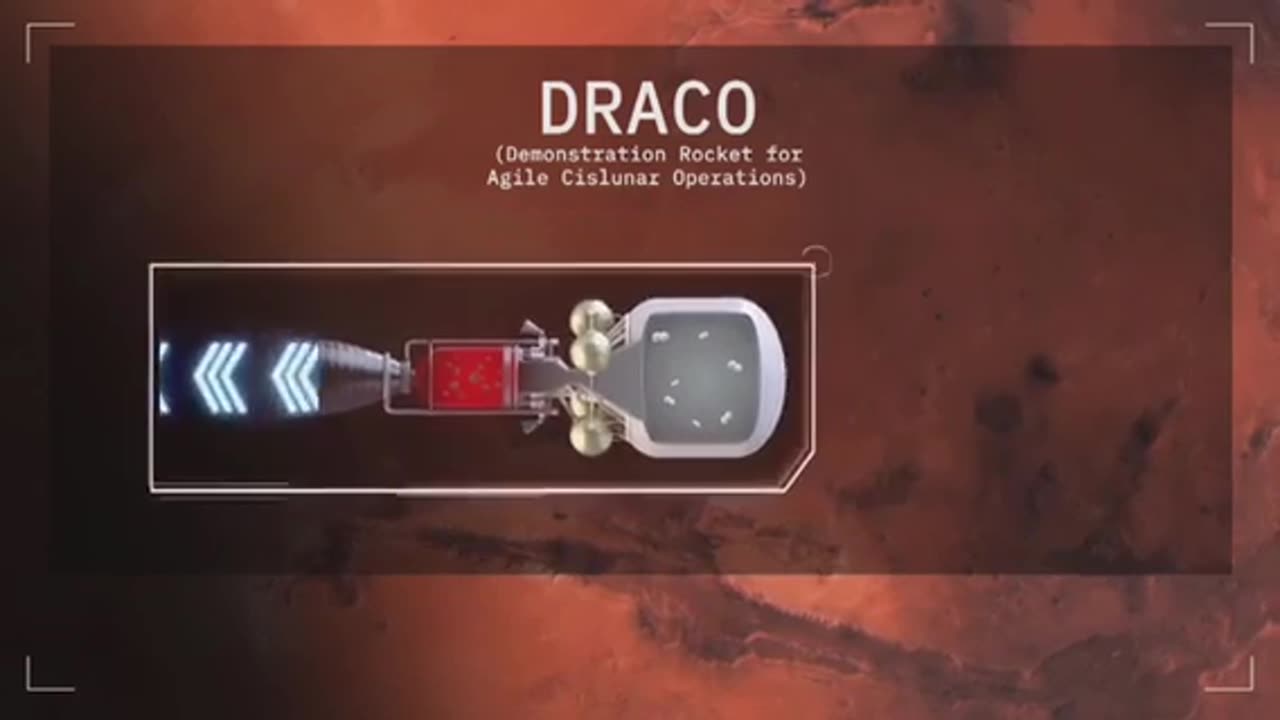Premium Only Content

Propelling the Next Frontier: NASA's Nuclear Ambitions for the Martian Race#NASA#Space#rumble
#NASA#space#spacexmission#rumble#rumblevideos#spacevideos#spacemission#spacevoice
#spacex#videos#rumblespace
The pursuit of space exploration has always demanded innovative solutions to overcome challenges that lie beyond Earth's boundaries. As humanity sets its sights on the Red Planet, Mars, the quest for advanced propulsion technologies becomes paramount. In a bold move, NASA is now preparing to harness the immense power of nuclear propulsion to secure its position in the race to Mars. This article delves into the intricacies of NASA's nuclear ambitions, exploring the science behind nuclear propulsion, its potential benefits, safety concerns, and the implications for the future of space exploration.
I. Nuclear Propulsion: A Cosmic Leap Forward
Advancements in space propulsion technology have historically relied on chemical rockets, which, while effective for reaching nearby celestial bodies, fall short when it comes to interplanetary travel. Enter nuclear propulsion – a concept that holds the potential to revolutionize the way we explore the cosmos. At its core, nuclear propulsion involves utilizing nuclear reactions to generate thrust, providing significantly greater efficiency and speed compared to conventional chemical propulsion.
A. Types of Nuclear Propulsion
Nuclear Thermal Propulsion (NTP): NTP relies on nuclear reactions to heat a propellant like hydrogen, which is then expelled at high speeds through a rocket nozzle to produce thrust. This concept promises higher specific impulse and reduced travel times, making it an attractive option for deep space missions.
Nuclear Electric Propulsion (NEP): NEP employs nuclear reactions to generate electricity, which in turn powers ion engines that expel charged particles to produce thrust. Although NEP offers lower thrust levels, its continuous operation and higher efficiency make it ideal for long-duration missions.
II. NASA's Mars Aspirations: Unveiling the Nuclear Pathway
Project Orion: A Glimpse into the Past
The concept of nuclear propulsion has been part of NASA's visionary thinking for decades. Project Orion, a hypothetical spacecraft design from the mid-20th century, proposed using controlled nuclear explosions as propulsion. While never realized, this audacious idea laid the foundation for future nuclear propulsion endeavors.
Nuclear Thermal Propulsion Testing
In more recent times, NASA has revisited nuclear propulsion through the Nuclear Thermal Propulsion (NTP) program. This initiative aims to develop and test a nuclear thermal propulsion system for crewed missions to Mars. By using a nuclear reactor to heat propellant, NTP could drastically reduce travel times and open new frontiers for exploration.
III. Benefits and Challenges of Nuclear Propulsion
A. Benefits
Reduced Travel Times: Nuclear propulsion could enable significantly shorter travel durations to Mars, potentially cutting months off the current journey time.
Increased Payload Capacity: The enhanced efficiency of nuclear propulsion allows for larger payloads, enabling more comprehensive scientific missions and potential colonization efforts.
Expanded Exploration Horizons: Nuclear propulsion could open up opportunities for missions to distant celestial bodies, advancing our understanding of the solar system and beyond.
B. Safety Concerns
Radiation Risks: Nuclear propulsion systems inherently involve radiation, raising concerns about crew safety during space travel and potential radioactive contamination upon reentry.
Regulatory Hurdles: Developing and launching nuclear-powered spacecraft requires navigating complex regulatory frameworks and international agreements.
IV. Paving the Way Forward: Overcoming Hurdles
A. Technological Development
Materials Science: Developing radiation-resistant materials is crucial to ensuring the safety and longevity of nuclear propulsion systems.
Testing and Validation: Rigorous testing of nuclear propulsion components and systems will be essential to mitigate risks and build confidence in their functionality.
B. Public Perception and Ethical Considerations
Public Acceptance: Gaining public support for nuclear-powered space missions requires transparent communication about the benefits, risks, and safety measures.
Environmental Impact: The potential environmental consequences of launching nuclear propulsion systems must be carefully assessed and addressed.
V. The Future of Interplanetary Travel: An Enriched Horizon
As NASA forges ahead with its nuclear propulsion ambitions, the space exploration landscape stands on the brink of transformation. The successful realization of nuclear thermal or electric propulsion could mark a turning point in our ability to explore the cosmos, extending our reach to Mars and beyond. The race to Mars is no longer just about speed; it's about harnessing the power of the atom to propel humanity toward an exciting and uncharted frontier.
-
 DVR
DVR
Cringe Panda
3 hours agoCringe Panda Gaming Stream
12.3K1 -
![Aug Day #10 of RCP 🤟 [FR/ENG] 🫶 Some Fortnite then Demos then continue on StarRupture 🫶 🤟](https://1a-1791.com/video/fww1/81/s8/1/O/0/c/-/O0c-y.0kob-small-Aug-Day-10-of-RCP-FRENG-Som.jpg) 4:24:45
4:24:45
Deaf Gamer Girl
5 hours agoAug Day #10 of RCP 🤟 [FR/ENG] 🫶 Some Fortnite then Demos then continue on StarRupture 🫶 🤟
21K -
 6:59:09
6:59:09
Reidboyy
9 hours ago $0.61 earnedBattlefield 6 #1 POV (Watch and Learn)
63K1 -
 2:25:42
2:25:42
TheSaltyCracker
4 hours agoThey So Mad ReEEeStream 8-10-25
78.4K162 -
 2:27:39
2:27:39
vivafrei
12 hours agoEp. 276: Epstein Subpoenas &Trump E.O! Bondi Offers Reward for Maduro Arrest? MADNESS IN CANADA!
104K94 -
 2:23:55
2:23:55
Barry Cunningham
7 hours agoPRESIDENT TRUMP IS NOT PLAYING AROUND...AND THE LIBNUTS CAN'T STOP HIM!
65.6K52 -
 22:02
22:02
Stephen Gardner
13 hours ago🔥JUST IN: Trump BETRAYAL plot EXPOSED!
84K253 -
 38:32
38:32
The Why Files
21 days agoThe Real CIA Vol. 1: 693 Pages of Secret Crimes
97.9K59 -
 49:12
49:12
MattMorseTV
10 hours ago $1.27 earned🔴Zelenskyy is NOT HAPPY about Trump’s NEW DEAL.🔴
101K136 -
 1:03:49
1:03:49
Warren Smith - Secret Scholar Society
4 days ago"You are on the brink" - My Conversation with Nick Fuentes
74.8K61